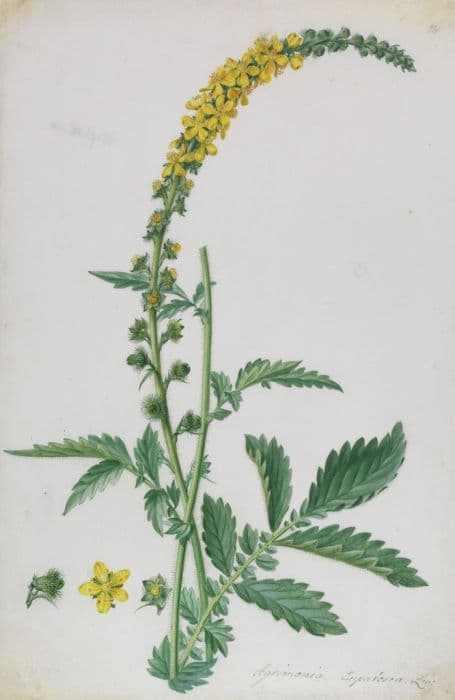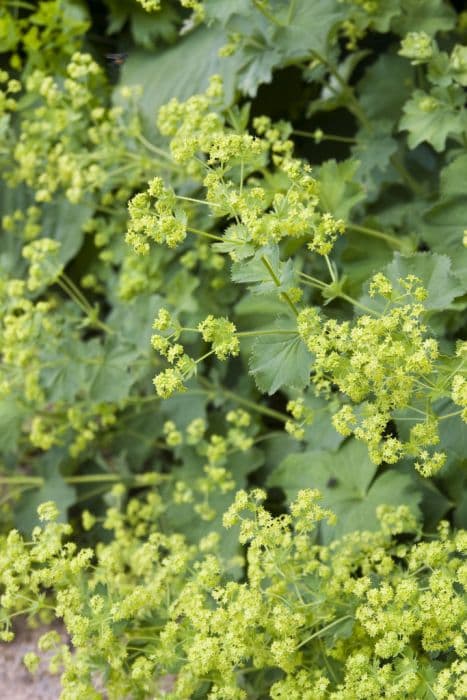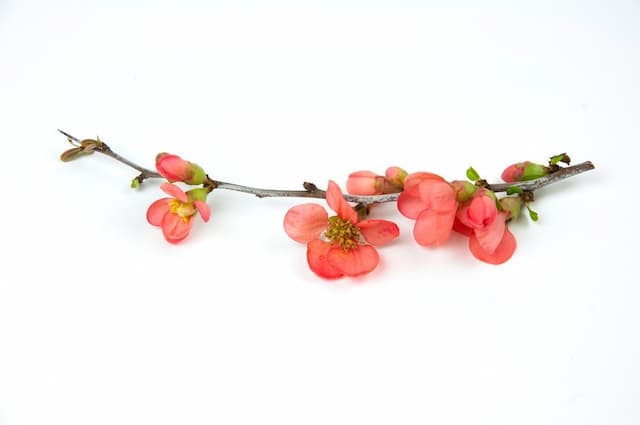European Pear Pyrus communis 'Louise Bonne of Jersey' (D)

ABOUT
The 'Louise Bonne of Jersey' is a cultivar of the common pear tree, known for its delightful fruit and attractive appearance. This tree typically has a rounded to spreading canopy filled with shiny green leaves that offer a pleasing backdrop for its springtime display. The foliage can also take on a lovely red or purple hue in the fall, adding seasonal interest to any garden. During spring, the tree is adorned with an abundance of white flowers, which have a gentle, captivating fragrance. These blooms are not only beautiful to look at but also attract pollinators like bees to the garden. As summer progresses, the tree begins to bear its famous pears, which are known for their excellent flavor and texture. The fruits are typically medium-sized, with a classic teardrop pear shape that slightly tapers at the top. The skin of the 'Louise Bonne of Jersey' pears has a smooth texture with a greenish-yellow background and is often covered with a reddish blush. Their flesh is white, juicy, and fine-textured, delivering a sweet and slightly acidic taste that makes them a favorite for eating fresh as well as for culinary uses. The tree's branches are strong and gracefully spread out, giving it a lovely presence in the landscape. When cared for properly, it can become a centerpiece in a garden, providing both visual beauty and a bountiful harvest of delectable pears.
About this plant
 Names
NamesSynonyms
Louise Bonne of Jersey Pear, European Pear
Common names
Pyrus communis 'Louise Bonne of Jersey'.
 Toxicity
ToxicityTo humans
The common name for Pyrus communis 'Louise Bonne of Jersey' is pear. Pears are not toxic to humans when consumed as the fruit is widely eaten. However, the seeds contain amygdalin, which can release cyanide when digested. Ingesting large amounts of cyanide can lead to symptoms like difficulty breathing, dizziness, headaches, and in severe cases, may result in coma or death. It should be noted that accidental ingestion of a few seeds is unlikely to cause cyanide poisoning, as the seeds would need to be chewed and consumed in large quantities to pose a serious health risk.
To pets
Pear is the common name for Pyrus communis 'Louise Bonne of Jersey'. Like in humans, the pear fruit itself is not toxic to pets, and many pets can safely eat small portions of the fresh fruit as an occasional treat. However, similar to humans, the pear seeds contain amygdalin, a compound that can release harmful cyanide when ingested. If pets chew and ingest pear seeds in significant amounts, they may experience symptoms of cyanide poisoning, which include vomiting, difficulty breathing, and in severe cases, seizures, coma, or death. It is best to avoid giving pets the seeds or the core of a pear to prevent any risk of toxicity.
 Characteristics
CharacteristicsLife cycle
Perennials
Foliage type
Deciduous
Color of leaves
Green
Flower color
White
Height
12-15 feet (3.7-4.6 meters)
Spread
8-10 feet (2.4-3 meters)
Plant type
Tree
Hardiness zones
5
Native area
Europe
Benefits
 General Benefits
General Benefits- Provides Fresh Fruit: The 'Louise Bonne of Jersey' pear tree yields delicious fruit that can be eaten fresh or used in various culinary preparations.
- Ornamental Value: With its beautiful blossoms in the spring and attractive foliage, it adds aesthetic appeal to gardens and landscapes.
- Shade and Shelter: As a tree, it offers shade for outdoor relaxation and shelter for wildlife.
- Environmental Benefits: Like all trees, it contributes to carbon sequestration, helping to mitigate climate change by absorbing carbon dioxide from the atmosphere.
- Supports Biodiversity: The flowers of the 'Louise Bonne of Jersey' pear tree provide pollen and nectar for bees and other pollinating insects, supporting local ecosystems.
- Economic Value: The fruit can be sold or saved as a food source, potentially reducing grocery bills or providing income.
- Seasonal Interest: The tree provides year-round interest with changing foliage and seasonal blossoms and fruit, enhancing garden dynamics.
- Recreational Gardening: Growing and tending to the 'Louise Bonne of Jersey' pear tree can be a satisfying hobby that promotes physical activity and a connection to nature.
 Medical Properties
Medical Properties- Antioxidant: The fruit of Louise Bonne of Jersey (European Pear) contains vitamins and antioxidants which may help protect cells from damage caused by free radicals.
- Digestive Health: Pear fruit is high in fiber, which aids in maintaining a healthy digestive tract and preventing constipation.
- Anti-inflammatory: Compounds found in pears have been known to have anti-inflammatory properties, possibly reducing inflammation in the body.
- Vitamin C Content: The fruit is a good source of Vitamin C, which is important for immune system function and skin health.
- Hypoglycemic Effect: Pears have a low glycemic index and may help in managing blood sugar levels.
 Air-purifying Qualities
Air-purifying QualitiesThis plant is not specifically known for air purifying qualities.
 Other Uses
Other Uses- Pyrus communis 'Louise Bonne of Jersey' wood can be used for wood carving or inlays due to its good machining qualities and fine grain.
- The tree can serve as a natural privacy screen when planted in rows along property boundaries.
- The plant can be trained against a wall or fence as an espalier for decorative purposes in landscape design.
- Bees are attracted to the flowers, thus the tree can play a role in supporting local pollinator populations.
- In homebrewing, the fruit can be used to create a pear-flavored beer or cider for a unique twist on traditional recipes.
- Flowering branches can be cut and brought indoors to use as part of a natural floral arrangement.
- The leaves can be used in the craft industry to create botanical prints or eco-friendly dye for fabrics.
- The fallen leaves and fruit can serve as compost material, enriching garden soil as they decompose.
- Pears can be used to produce a mild, natural vinegar through fermentation, which can be used in culinary applications or as a household cleaning agent.
- The tree's moderate shade can provide a conducive microclimate for growing shade-tolerant understory crops or ornamentals in a permaculture design.
Interesting Facts
 Feng Shui
Feng ShuiThe Pear Tree is not used in Feng Shui practice.
 Zodiac Sign Compitability
Zodiac Sign CompitabilityThe Pear Tree is not used in astrology practice.
 Plant Symbolism
Plant Symbolism- Abundance: The Pyrus communis, commonly known as the pear tree, often symbolizes abundance due to its prolific fruit production.
- Fertility: With its springtime blossoms and ample fruit, the pear tree is frequently associated with fertility and fecundity.
- Longevity: Pear trees can live for many years, making them a symbol for a long and healthy life.
- Love: In some cultures, the pear tree is a symbol of affection and love, possibly due to the fruit’s sweet taste and pleasing shape.
- Prosperity: The bountiful harvests that pear trees can provide symbolize material wealth and prosperity.
 Water
WaterThe European pear, specifically the 'Louise Bonne of Jersey', should be watered deeply once a week during its active growth season, especially if there isn't significant rainfall. This watering schedule should provide about 1.5 to 2 gallons of water to help maintain consistent soil moisture without causing waterlogged conditions. During the dormant season, reduce watering frequency, monitoring the soil for dryness every few weeks. If the soil is dry 2 to 3 inches below the surface, it's time to water again. Newly planted trees require more frequent watering to establish roots, sometimes twice per week with 1 to 2 gallons each time.
 Light
LightThe 'Louise Bonne of Jersey' pear tree thrives best in full sun conditions. Ensure it is planted in a location where it receives at least 6 to 8 hours of direct sunlight daily. The tree will produce the best fruit yield and healthiest growth when placed in an unobstructed sunny spot.
 Temperature
TemperatureEuropean pear trees, such as the 'Louise Bonne of Jersey', are hardy and can tolerate cold winter temperatures down to about -20°F. However, they grow best in an environment where the temperature ranges between 35°F and 85°F. During flowering in the spring, temperatures around 60°F to 70°F are ideal for pollination.
 Pruning
Pruning'Louise Bonne of Jersey' pear trees should be pruned to encourage strong structure, remove diseased or damaged limbs, and to improve air circulation which enhances fruit quality. Prune when the tree is dormant, typically in late winter to very early spring before new growth starts. Thinning the canopy once a year is usually sufficient unless you're correcting damage or disease.
 Cleaning
CleaningAs needed
 Soil
SoilEuropean Pear 'Louise Bonne of Jersey' thrives in well-draining, loamy soil with a pH of 6.0 to 7.5. A mix of garden soil, compost, and perlite or sand will provide the best soil structure and fertility for healthy growth.
 Repotting
RepottingEuropean Pear trees, including the 'Louise Bonne of Jersey' variety, are typically not repotted as they are grown outdoors in the ground. However, if grown in pots, young trees should be repotted every 2 to 3 years to accommodate root growth.
 Humidity & Misting
Humidity & MistingEuropean Pear 'Louise Bonne of Jersey' tolerates a wide range of humidity levels, but prefers average outdoor humidity. It does not have specific high humidity requirements.
 Suitable locations
Suitable locationsIndoor
Provide bright light, moderate temps, and air circulation.
Outdoor
Plant in full sun, well-draining soil; water regularly.
Hardiness zone
4-9 USDA
 Life cycle
Life cycleThe European pear 'Louise Bonne of Jersey' begins its life cycle as a dormant seed, requiring stratification to break dormancy. After germination, the seedling develops into a young tree through the vegetative growth phase, establishing a root system and foliage. As the tree matures, it enters a reproductive phase, characterized by the development of flower buds that bloom in early spring to facilitate cross-pollination, often with the help of pollinators such as bees. Following pollination, the flowers develop into fruit, with the pears typically ripening by late summer or early autumn. The fruit is then harvested, and any seeds inside may disperse to give rise to new seedlings. During harsh winter conditions, the tree enters a period of dormancy, conserving energy for the next growth cycle.
 Propogation
PropogationPropogation time
Late winter-early spring
The most popular method for propagating Pyrus communis 'Louise Bonne of Jersey', commonly known as the European Pear, is by grafting. Grafting is typically done during the dormant season in late winter or early spring. In this process, a scion, which is a small twig with dormant buds from a desirable pear tree, is attached to a rootstock of another tree that provides the roots and lower trunk. The scion and the rootstock are cut at similar angles, then joined together and secured with grafting tape or wax to keep out disease and maintain moisture. The grafted area is carefully monitored to ensure the scion has successfully fused with the rootstock and started to grow, creating a new pear tree with the desired fruit characteristics of 'Louise Bonne of Jersey'.









